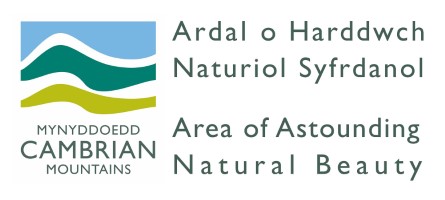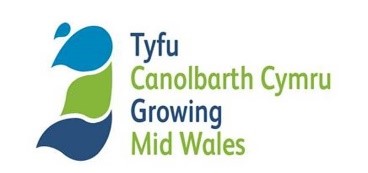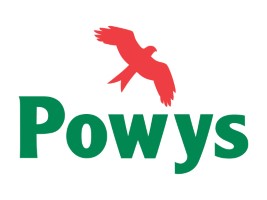We’re so honoured to have been part of the CUPHAT‘s visit to the Wicklow and Blackstairs Mountains recently and to have received such a warm and genuine Irish welcome. Similar to the Cambrian Mountains and Preseli Mountains in so many ways, but with subtle and unique differences that make the Ireland trip from Wales a must for all. Big thankyou to the team at University College Dublin for organising an astounding programme of experiences for us all.

Day 1 – Friday 3rd of March
Whether you leave from Holyhead or Fishguard, your exploration of the emerald isle begins the minute you get on the ferry. You’ll hear the Irish accent as you cross the Irish Sea and contemplate the ancient Celtic journeys and pilgrimages going back millenia.

Looking back towards Wales and wondering what the landscape will look like when we get to Ireland.
Fortunately this journey was super-smooth an the company and hospitality on Stena Ferries was perfect. Highly recommend the Stena Plus package.
We were also fortunate to have a great bus company and driver in the form of Gareth and Andrew from Richards Bros in Aberteifi Ceredigion.
Final destination on our first day was the Woodenbridge Hotel in Vale of Avoca Co. Wicklow. This is Ireland’s oldest hotel, built in 1608, a year before the death of our dear Twm Siôn Cati!
The first evening involved a great meet and greet with our Irish contemporaries who we’d previously met on their Learning Visit to the Cambrian Mountains and the Preseli Mountains in October 2022.
Totally inspired by Pat Mellon’s presentation by the way as well as the introduction by Caren Carruthers from Ireland’s Ancient East/Failte Ireland.
Not too late to bed as we had an early start and a full day the following day.

Day 2 – Saturday 4th of March
A full Irish breakfast had by all we joined Gareth on the Richards Bros bus and headed to
Cill Mhaigh Ghaoithe Forest Recreation Area. David gave us a great presentation regarding outdoor development and an insight into the reintroduction of the red kite with the help of the Golden Eagle Trust and the Red Kite Trust from Wales. Red kites hovered over our heads as David led us through the forest.

Surrounding the Cill Mhaigh Ghaoithe Forest Recreation Area there are numerous copper mines mirroring the lead mining heritage of the Cambrian Mountains and slate quarring in Rhosbwlch in the Preseli Mountains.
We moved on from the forest and headed towards Aughrim.

At Aughrim we were welcomed by “Mae Hen Wlad Fy Nhadau” being played at the Augrhim Town and Country Market, a market not to dissimilar to the one held in Aberystwyth and also the Cambrian Mountains Food, Drink and Craft Fair. Some wonderful produce available too.


With so many ancient stone structures in the Cambrian Mountains and the Preseli Mountains it was truly superb to visit Rathgall Hillfort or the Ring of the Rath a large hill fort near the town of Shillelagh. Dating from the Bronze Age, it consists of three roughly concentric stone ramparts with a fourth masonry wall dating from the Medieval period at its centre.


A big thank you to Deirdre Burns, Heritage Officer at Wicklow County Council for showing us around the site and for sharing her wealth of knowledge about this remarkable place. How perfectly located this site is as well, with the Wicklow Mountains to the north and the Blackstairs Mountains to the south.

Next on our busy schedule was the Chocolate Garden of Ireland where we were introduced to all things cocoa and the family business by MD Jim Healy. How similarities continue between the two countries as we couldn’t but think of our own Sarah Bunton Chocolates in Devil’s Bridge.
No visit to the Wicklow Mountains is complete without an excursion to this place.




Next door to the The Chocolate Garden of Ireland you’ll find the Rathwood Garden Centre This family run centre has so much to offer and is well worth a visit. We’d love to have spent more time here. In fact you could spend the whole day just visiting Rathwood Centre itself.






Without a shadow of doubt, the visit to Coollattin Estate was one of the most dramatic of experiences this weekend. Peter and Ian, now the co-owners of the property and estate, met us and introduced us to this amazing house.
Coollattin Estate was the largest single landholding in County Wicklow in the 1830s under the Fitzwilliam family. It stretched to 90,000 acres, covering one-fifth of the county and was home to 20,000 tenants.
The house was built in 1804 by architect John Carr of York, with alterations to the property made by William Dickie around 1875.

One of the final stops on the our first full day in the Wicklow Mountains was Shillelagh.
We really enjoyed the company of Eleanor and Kevin who along with Sandra guided us around this wonderful community especially the church with its ancient cork tree, one of only three left.


Parallels were also drawn to the Cambrian Mountains’ Ystwyth Trail as we visited the site of the former Shillelagh Railway Station and Terminus. It is hope to develop a recreational trail and greenway along, or as near as possible to this historical railway line.

Famous for its ‘Shillelagh Stick’, the town stands on the River Derry and has an eye-catching church as well as a stick shop, where were welcomed by owner Liam O Caidhla who’s been making sticks for years. Again parallells with Dafydd Davies Stickmaker in the Cambrian Mountains came to mind.
The skill has been in Liam’s family since before the time of his great-grandfather Denis and has been passed down through the generations. Liam works with his son, also Denis, crafting these sticks and keeping the tradition alive.

Finally after a long day, we called in at Pooles of Carnew where we we received some incredible hospitality and a presentation by Lorcan Carpenter of Old Forge Glamping/The Munny Trail in Coolkenno, Co. Wicklow.
Day 3 – Sunday 5th of March
After a great night in Carnew, Sunday morning saw us back on the bus and zooming down the dual carriage way to Rathnure GAA Club. For such a rural club, the Nicky Rackard Park is such an incredible place to visit.

Under the shadow of Blackstairs Mountain 734m, this welcoming community really loves its sport of hurling and from an early age, children can be seen enjoying competition and gripping a hurling stick with the same sense of pride as Welsh children run and pass with a rugby ball.
Thanks to Tom Folley from the Rathnure St Anne’s GAA Club for his welcome and for showing us around the club’s facilities. We all really enjoyed seeing the children and adults get stuck into this oh so Irish sport with some of the Welsh party members having a go too.

Hurling is such a quintessential Irish game. Its oozes Irishness through and through and to hear and see it being played provides you with immense sense of place.

We were extremely honoured to be presented with a hurling stick on our departure too and we hope it can inspire people in the Cambrian Mountains to take an interest and maybe visit a hurling match when they visit Ireland one day.



Back on the bus!!!
And we’re off to the Cow House Studios before you can say udderly butterly..

Cow House Studios’ aim is to support contemporary visual arts practice. They hope to foster a deep curiosity for one’s surroundings and encourage further engagement with the creative process as a catalyst for independent thought. To this end, they provide art education for children, teens and adults; facilities for colleges, schools and artist-led groups; and an artist-in-residence programme for professional artists.
Thank you Rosie and Frank for showing us around this fascinating site on the slopes of Blackstairs Mountain.



It’s always nice to meet people who work in a same way as you do. In Myshall in Co. Carlow. we met Eileen and Damien who gave us an insight into Carlow Tourism and how it operates as body.
We also enjoyed learning about the Columban Way and visiting the Adelaide Memorial Church.


Thank you to Pat and John for introducing us to the delights of Myshall especially the Adelaide Church, centrepiece of this village, with its cork tree. The community reminded us of Llanddewi Brefi in the Cambrian Mountains, a place visited by St David, the Patron Saint of Wales.

From Myshall we headed to the historic landmark of nearby Borris Viaduct. Not as high as Cynghordy Viaduct in the Cambrian Mountains, but just as impressive and historically significant.

The Borris Railway Viaduct with its sixteen arches supported by soaring limestone pillars is one of Ireland’s best example of pioneering 19th. Century railway engineering. Designed by the engineer William Le Fanu (1816– 1894) and built by M. Talbot. The Viaduct rises to 60ft high and spans the Borris and Mountain River Valley. It was built at a cost of £20,000 and completed in 1860. Cynghordy Viaduct was built in 1868.
On the last leg home of today’s journey we passed by Osbornes Pub and Tourist Accommodation. Located under Mount Leinster at 794m not to dissimilar to Pumlumon Fawr 752m in the Cambrian Mountains and Foel Cwmcerwyn 536m in the Preseli Mountains.
What a place and what a welcome! We could have stayed here all night.





At Nine Stones we sneaked out for a super-fast dark sky experience too, with Arlene’s full permission of course!!!


Arlene
Just when we thought we had no energy left, we headed off to the Orchard Centre and Baileys Farm, where they produce the cream for Baileys liqueur.


Fuelled up and ready to rock and roll, we all headed to the Dying Cow. Not the most appetising and welcoming of pub names but the welcome and craic there was out of this world. A little bit like the Towy Bridge Inn in the Cambrian Mountains and probably with a much smaller bar area too. Live Irish music being played with gusto in the corner and a one in one out policy for the queue to the bar.






And that programme on TV? That was a live-feed of your friend queuing at the bar for the ultimate and final pint of Guinness…..maybe!
Being part of the CUPHAT project has really opened our eyes to the opportunities and possibilities of heritage tourism here in Wales. The Cambrian Mountains and Preseli Mountains have an opportunity now to put into action some of the ideas shared with us by our Celtic cousins in Blackstairs and Wicklow Mountains, across the Irish Sea.
We hope the schools work together too and that tourists of the future can be inspired to visit these four mountain regions as a result of our Learning Visit.
Further more, we hope that the Cambrian Mountains Initiative and PLANED can continue working together after the CUPHAT project ends in the summer of 2023.
We make a great team.
Thanks to Aberystwyth University and University College Dublin for allowing us the opportunity to be part of the CUPHAT project.

Day 4 – Monday 6th of March
Thanks to Brian Dunne from the Wicklow Uplands Council and Frederic Verdier from Visit Wicklow for your final bits of inspiration on Monday morning.













